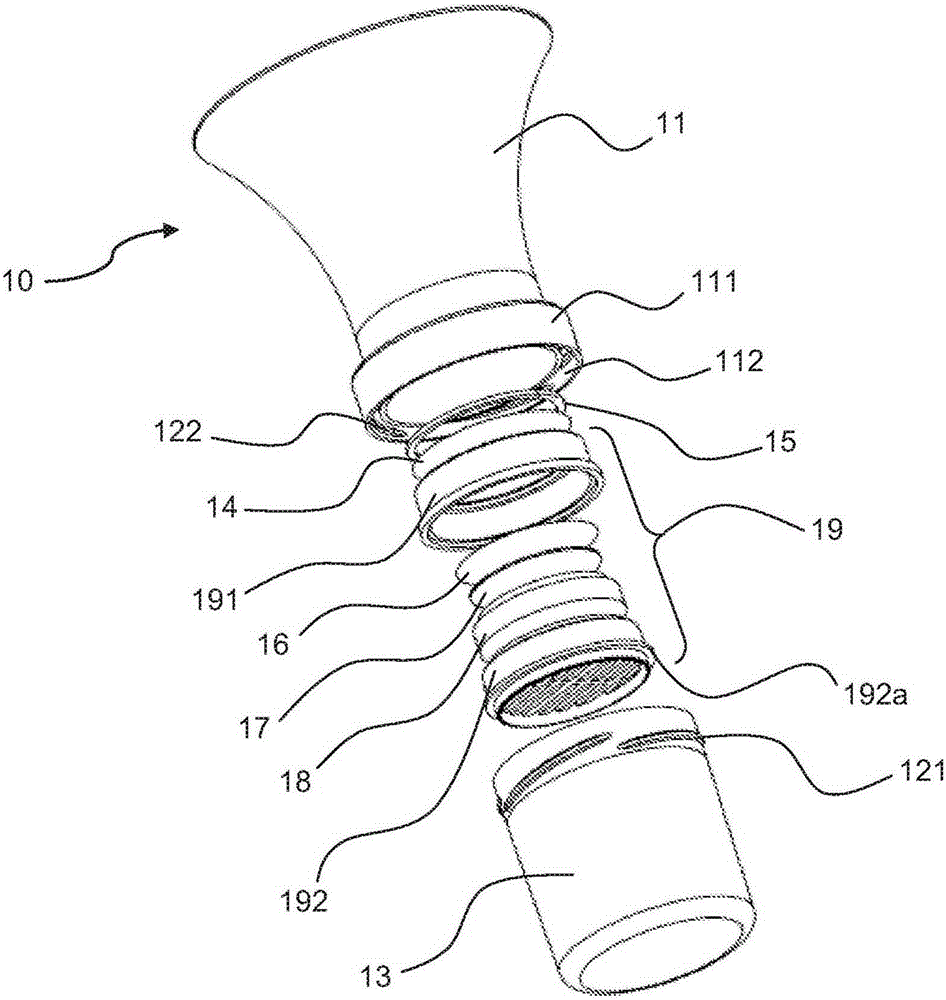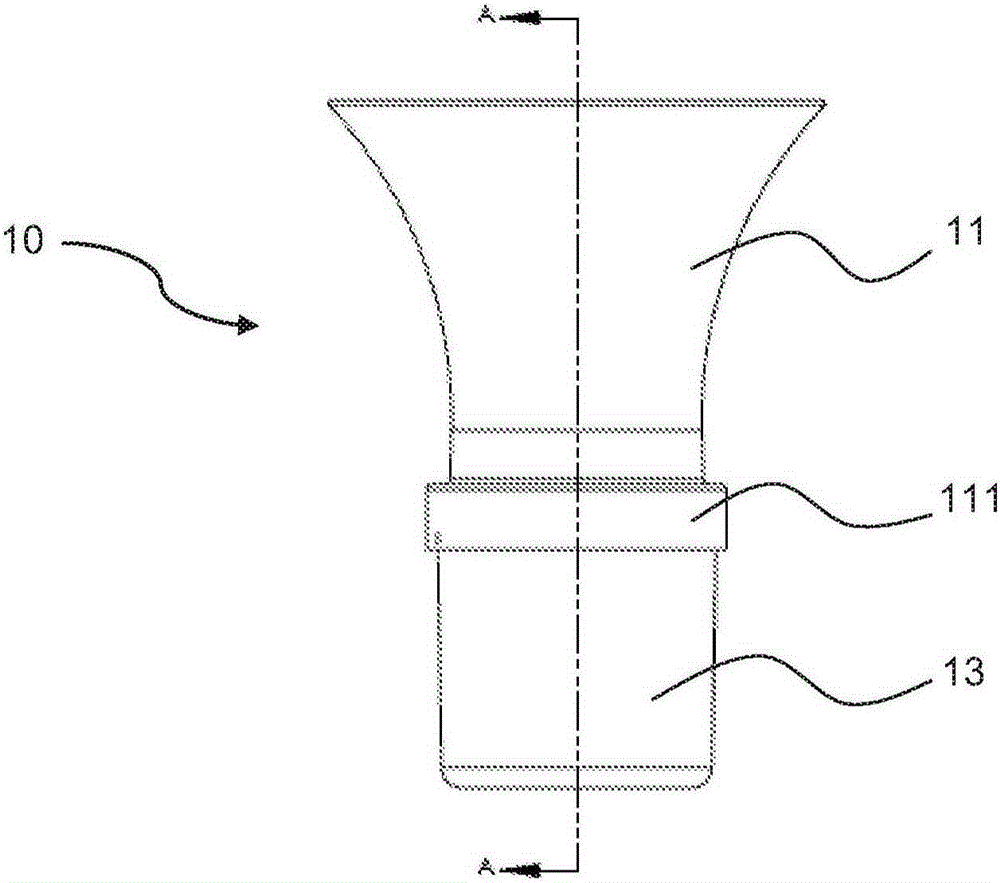Cell collecting device
A cell and sample collection technology, applied in the field of devices for collecting cells from biological samples, can solve problems such as increasing the risk of cell deterioration, damage to analysis materials, and difficulty in making a diagnosis, so as to reduce the risk of damage, reduce the need, The effect of reducing the chance
- Summary
- Abstract
- Description
- Claims
- Application Information
AI Technical Summary
Problems solved by technology
Method used
Image
Examples
Embodiment Construction
[0052] first reference figure 1 , shows the components of the first embodiment of the cell collection device 10 . The device 10 comprises four main parts / assemblies, namely an inlet funnel 11 , a bottom container 13 , a cell collection membrane 14 (with support ring 15 ) and a fluid absorption assembly 19 . In the assembled device 10, the cell collection membrane 14 and fluid absorbent assembly 19 are adsorbed between the inlet funnel 11 and the bottom container 13, as described below. The device has an overall height of approximately 10 cm.
[0053] The bottom container 13 is a cylindrical container with an open top. The inlet funnel 11 has the form of a hollow, conical cylinder, open at both ends. A ring 111 is integrally formed with the lower (as seen in the figures) end of the inlet funnel 11 and forms a channel 112 between the wall of the inlet funnel 11 and the ring 111 . The outer surface of the rim of the bottom receptacle 13 and the inner surface of the ring 111 a...
PUM
| Property | Measurement | Unit |
|---|---|---|
| Average hole size | aaaaa | aaaaa |
Abstract
Description
Claims
Application Information
 Login to View More
Login to View More - R&D Engineer
- R&D Manager
- IP Professional
- Industry Leading Data Capabilities
- Powerful AI technology
- Patent DNA Extraction
Browse by: Latest US Patents, China's latest patents, Technical Efficacy Thesaurus, Application Domain, Technology Topic, Popular Technical Reports.
© 2024 PatSnap. All rights reserved.Legal|Privacy policy|Modern Slavery Act Transparency Statement|Sitemap|About US| Contact US: help@patsnap.com










